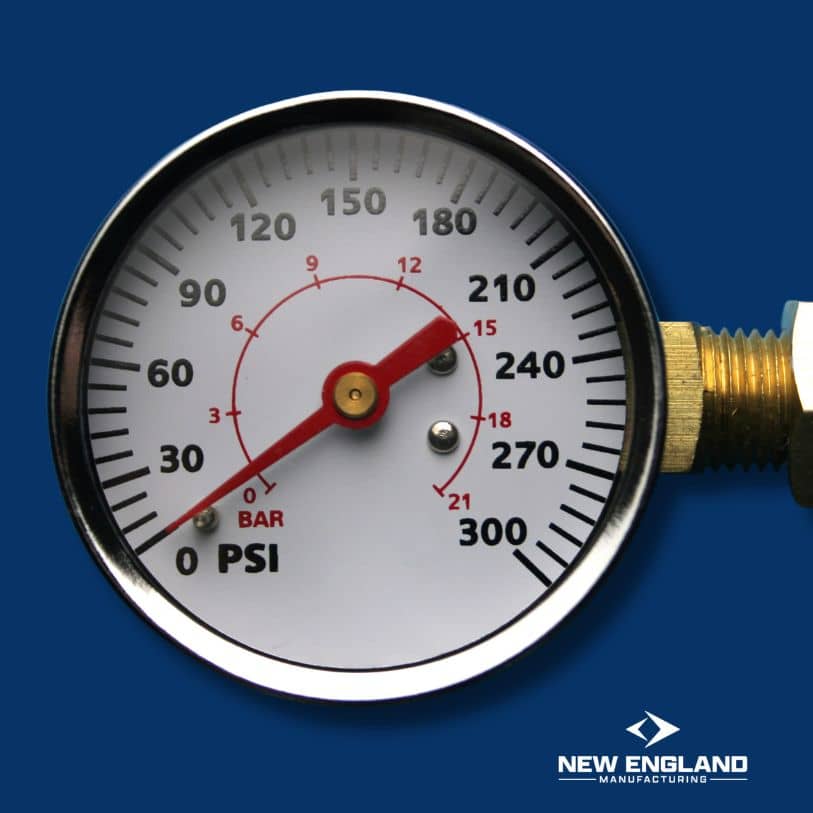Precision Under Pressure: How to Select Certified Pressure Gauges for Your Needs
Certified pressure gauges play a pivotal role when it comes to ensuring the safety and efficiency of industrial operations. These devices, vital for monitoring pressure levels in various systems, are more than just tools; they are guardians of your machinery and workforce. Choosing the correct pressure gauge is essential, not only to comply with safety standards but also to optimize performance and avoid costly disruptions. This guide will walk you through the crucial considerations when selecting certified pressure gauges, ensuring you make an informed decision that aligns with your operational requirements.
Understanding the Importance of Certification
Certified pressure gauges are rigorously tested to meet specific standards set by regulatory bodies. This certification is your assurance that the gauge has been evaluated for accuracy and reliability under predefined conditions. When selecting a gauge, the first step is to ensure it meets the certification requirements relevant to your industry. This might involve standards set by international or national agencies, which guarantee that the devices are suitable for their intended use.
Gauge Accuracy
Accuracy is a paramount concern. Certified pressure gauges come with ratings that define their level of precision. These ratings, often expressed as a percentage of the full-scale range, determine how closely the gauge will display the actual pressure. Selecting a gauge with the right accuracy is crucial for processes that demand high precision. For general applications, a standard accuracy level may suffice. However, for more sensitive operations, opting for a gauge with a higher accuracy specification is advisable.
Range and Scale
Choosing a gauge with an appropriate range is critical. The ideal certified pressure gauge should have a range that includes all possible operating pressures of your system, but not excessively so. A rule of thumb is to select a gauge where the maximum system pressure is 75% to 80% of the gauge’s scale. This positioning helps in maintaining the best balance between readability and lifespan of the gauge.
Material Compatibility
The materials used in certified pressure gauges must be compatible with the media they will encounter. This includes the process fluid, as well as environmental factors like humidity and temperature. Common materials for gauge components are stainless steel, brass, and plastic, each suitable for different conditions and fluids. Incorrect material selection can lead to gauge failure, chemical corrosion, and even safety hazards.
Environmental Considerations
Environmental factors also play a crucial role in selecting the right certified pressure gauges. For outdoor applications or in environments with harsh conditions, such as vibrations, pulsations, or extreme temperatures, your gauge needs to withstand these challenges. Specialized gauges designed for harsh environments, equipped with dampening mechanisms or weather-resistant cases, might be necessary.
Mounting and Installation
The mounting style of a certified pressure gauge can affect its performance and longevity. Gauges can be mounted directly on equipment or installed remotely with a capillary line. The choice depends on the need to reduce vibration, temperature extremes, and mechanical stress. Additionally, consider the ease of installation and future maintenance when choosing the mounting configuration. Proper mounting ensures reliable readings and prolongs the lifespan of the gauge.
Cost vs. Longevity
While cost is always a consideration, it’s important to balance initial expenses with the operational lifespan and maintenance needs of certified pressure gauges. Investing in a higher-quality, durable gauge might be more cost-effective in the long run, considering the potential costs of downtime and maintenance associated with less reliable models.
Maintenance and Calibration
Regular maintenance and calibration are essential for ensuring that certified pressure gauges continue to operate at their best. Over time, even the most robust gauges can drift from their original calibration, potentially leading to inaccurate readings and risky decisions. It’s important to develop a maintenance schedule that includes periodic calibration, inspection, and cleaning to maintain gauge accuracy and reliability.
Calibration should be performed according to the manufacturer’s recommendations and local regulations. This typically involves comparing the gauge against a standard known to be accurate and making adjustments if necessary. For industries where precision is critical, more frequent calibration may be necessary. Additionally, keeping records of these calibrations, as well as any repairs or adjustments made, is important for audit trails and maintaining compliance with industry standards.
Conclusion
Choosing the right certified pressure gauges is crucial for maintaining the efficiency, safety, and reliability of your industrial operations. By considering factors such as certification, accuracy, range, material compatibility, environmental conditions, mounting options, and cost versus longevity, you can select a gauge that not only meets but exceeds your operational requirements. Remember, a well-chosen pressure gauge not only performs its function effectively but also contributes to the overall stability and success of your operations. Let your choice reflect your commitment to quality and safety, ensuring that every pressure point in your system is under control.
Read More:
Water Pressure Monitorin

Mark R.
With a strong foundation in industrial safety and fire protection systems, Mark R. specializes in creating clear, technical, and compliance-driven content. Writing for SafeTech Reports, he covers topics such as fire hydrant testing, PPE protocols, emergency procedures, and smart technology integration in safety systems. His work ensures that professionals stay informed on the latest regulations, best practices, and emerging trends in safety and infrastructure maintenance.
Get in touch
We usually respond within 24 hours
Need Reliable Water Flow Test Equipment?
For over 70 years, New England Manufacturing has been the trusted source for fire hydrant and water flow testing kits. From pitot gauge kits to custom test kits, we provide precision, durability, and expert calibration to meet your needs.
- Custom-built test kits
- High-quality pressure gauges
- Reliable calibration services


